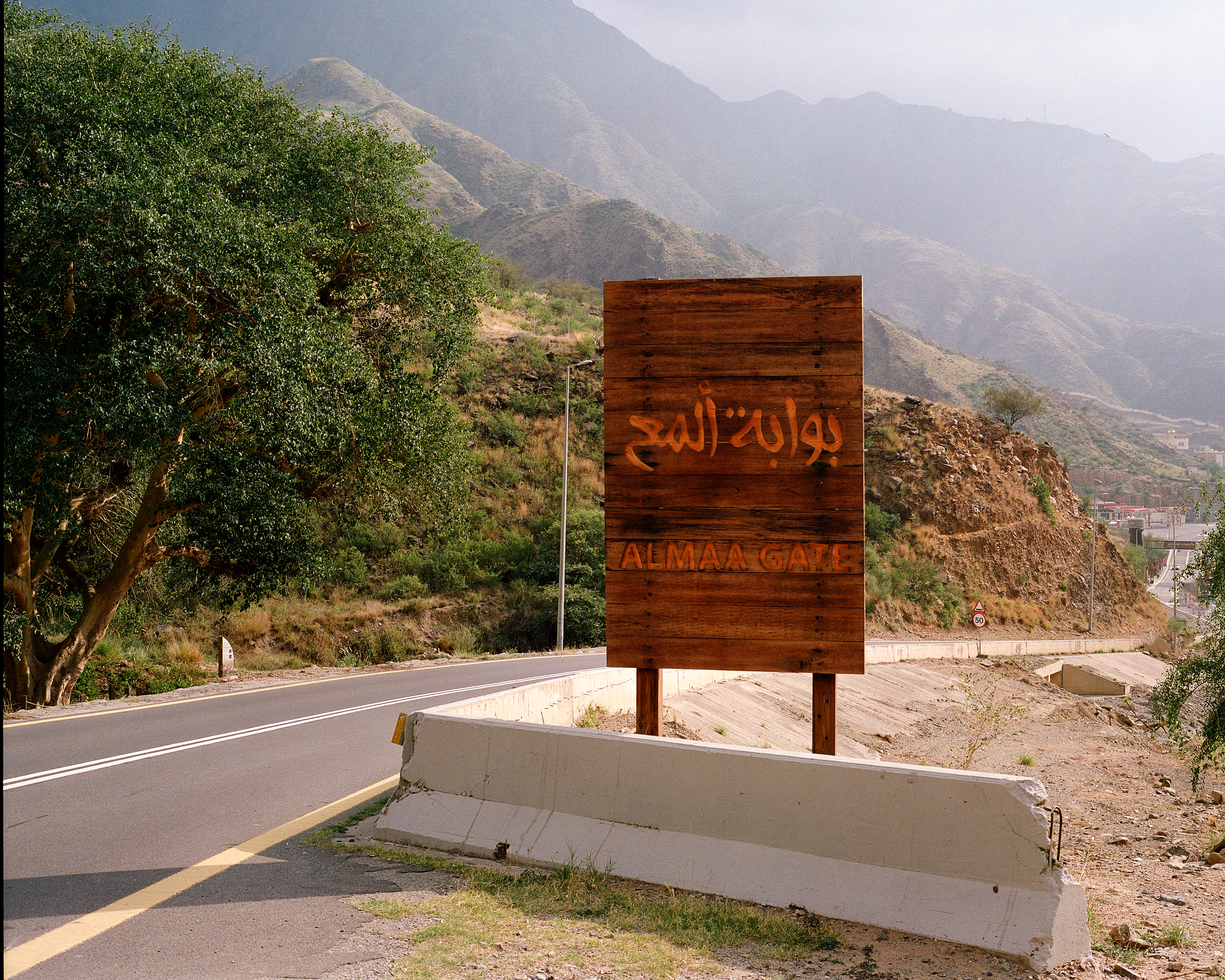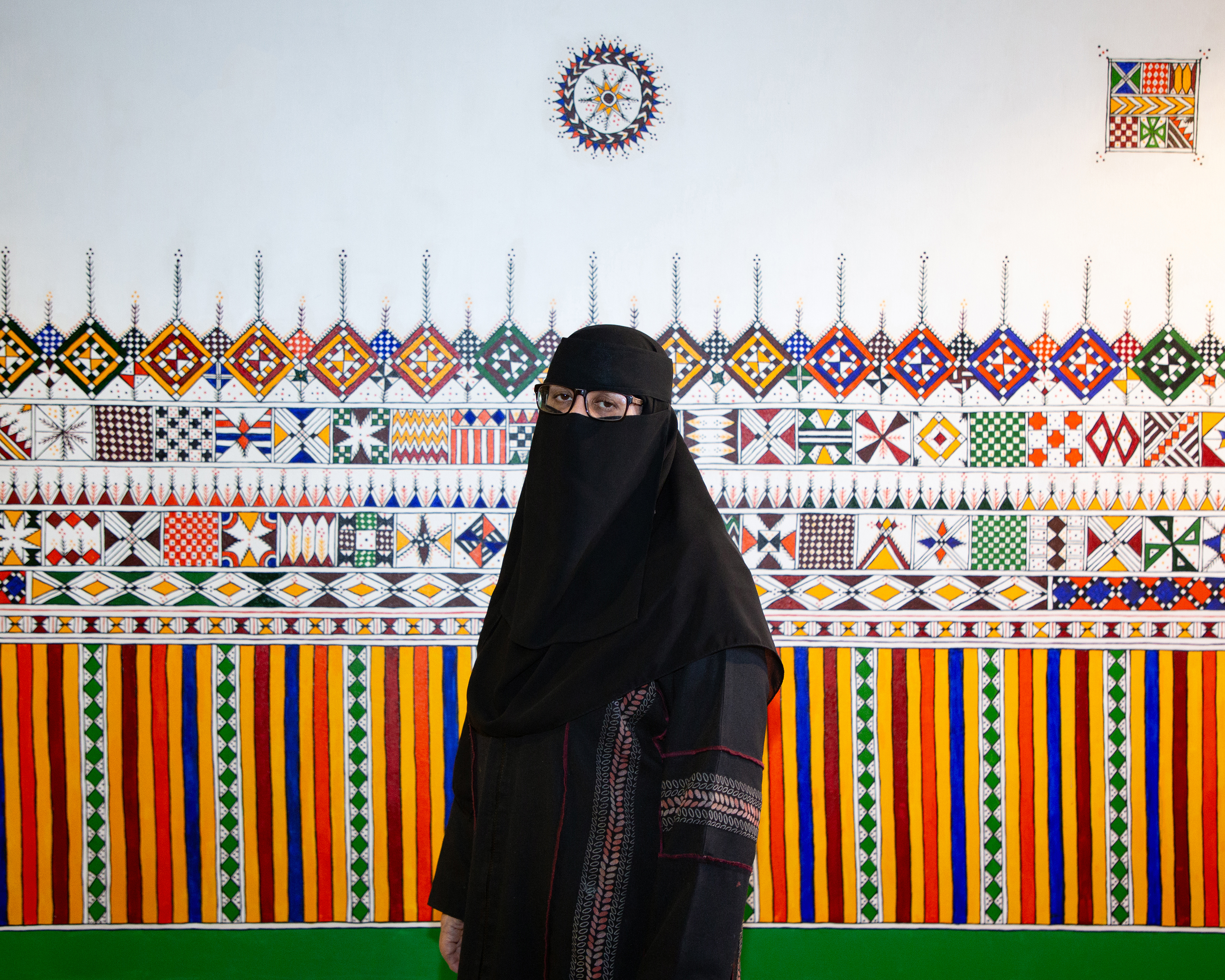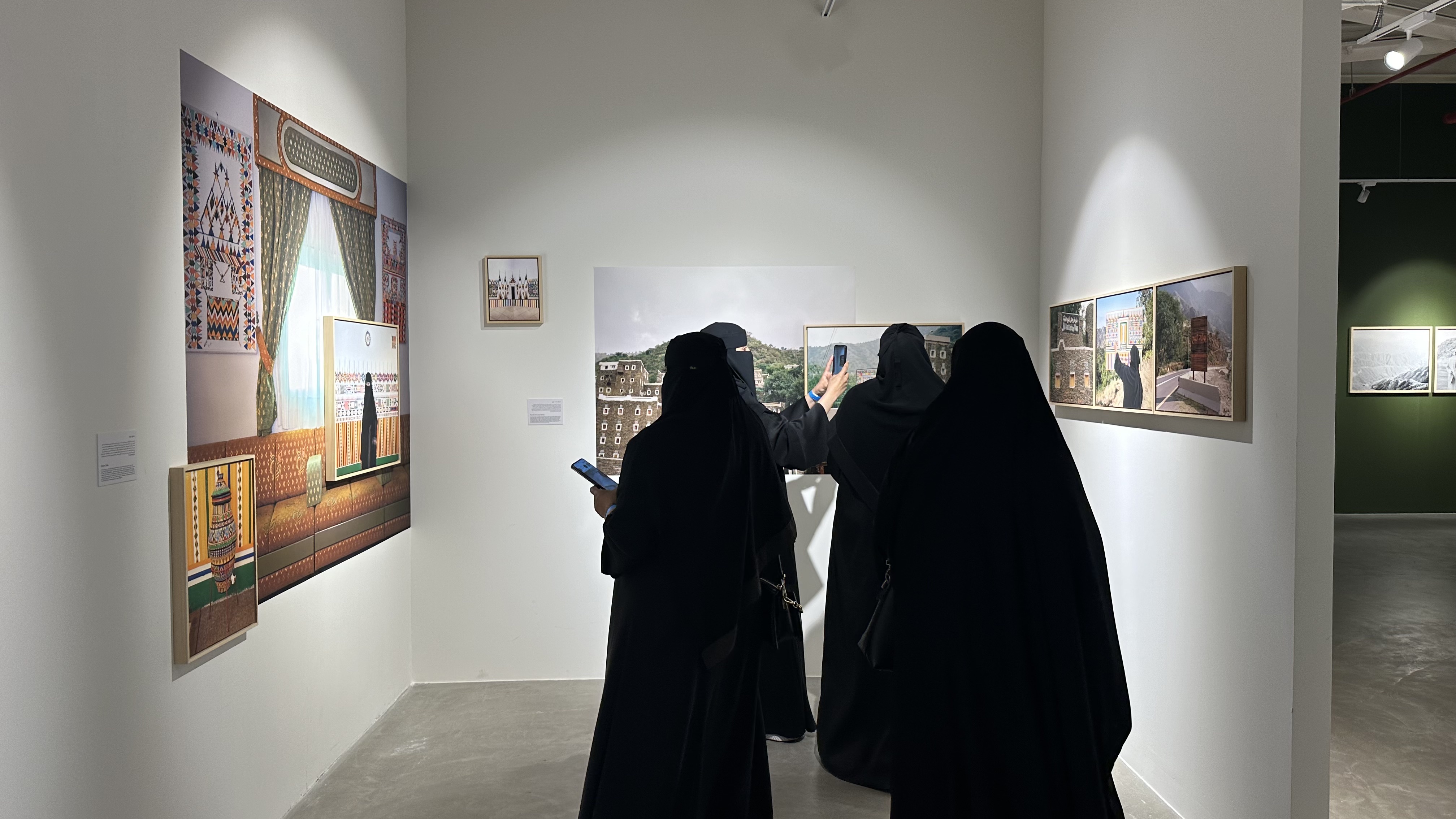















Banat Al Qatt portrays practitioners of Al Qatt Al Asiri, an intergenerational tradition deeply rooted in the indigenous culture of Asir. Originally practiced by women gathering to beautify their homes, Al Qatt is a powerful self-expression and ceremonial ritual. Learning about the art form’s intricate geometric patterns, I came to understand the deep bond between these women and the diverse topographies—domestic and natural—that inspire them.
I learned how the murals encode untold histories of women and their communities. The triangular motifs, known as banat—which translates as girls—represent both the women who carry the tradition and metaphorical “girls” depicted within the designs. In these patterns, I found important cultural transmissions, the systems of triangles standing as symbols of feminine heritage.
In Banat Al Qatt, I pay tribute to the women's dual roles as artistic creators and custodians of culture. The artists draw from nature, translating its forms into geometric patterns that find their fullest expression on the walls of the majlis. Their designs often center on the windows that look out on dramatic landscapes, creating a dialogue between interior and exterior worlds—a theme that shaped my approach to photographing both the artists and their work within the settings that inspire them.
What sustains Al Qatt, now recognized on UNESCO’s list of the Intangible Cultural Heritage of Humanity, is solidarity and resilience, heard in the artists’ chants such as “Bait Abi yangish wa y’trangash” (“My father’s home is being decorated and beautified”).
Banat Al Qatt revels in this joyous strength, recognizing the art’s cathartic power: it preserves heritage, shapes identities, and empowers its practitioners, offering newfound independence as it develops from domestic practice to encompass canvases, pottery, and more. To sustain this evolution, they need spaces for creativity, exchange, and community engagement, ensuring the tradition continues to thrive.
2024



